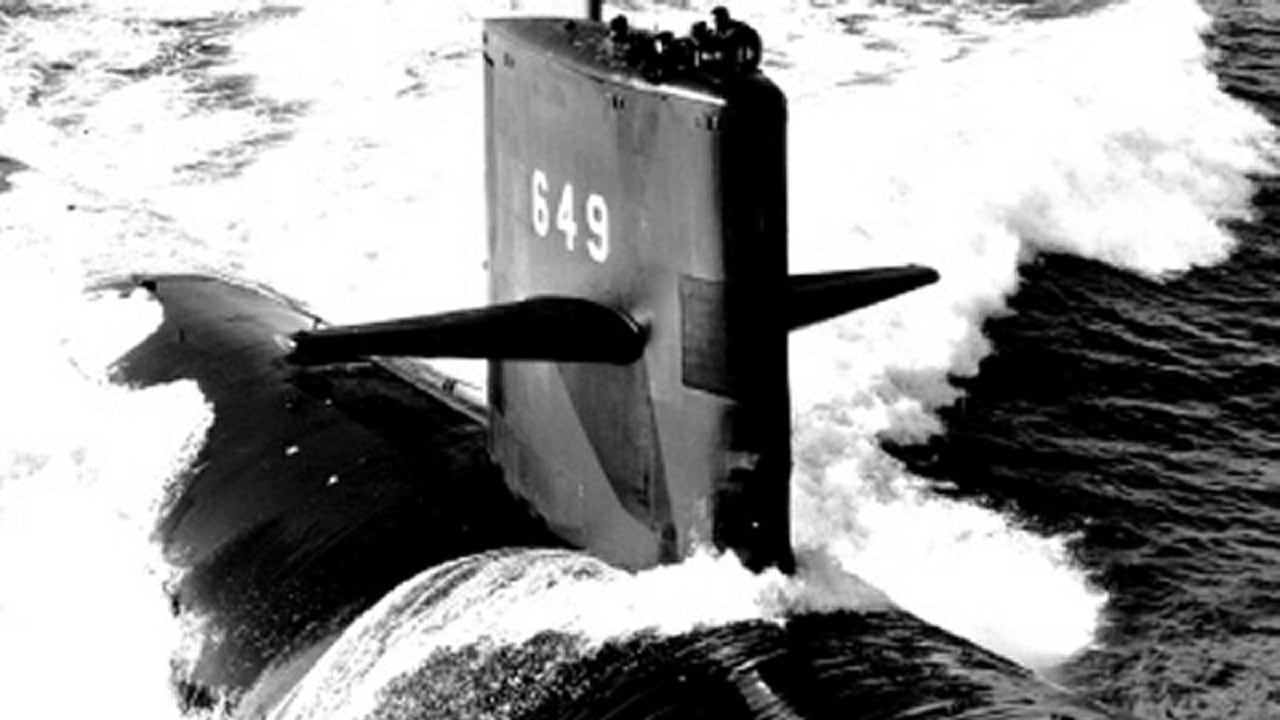Nuclear deterrence is one of the U.S. military’s top priorities, and submarines are critical components in maintaining it.
The U.S. would deploy these submarines in response to any nuclear attack. Underwater vessels complement nuclear-capable airframes and land-launched missiles to form what we call the nuclear triad — a three-pronged approach to ensuring mutual assured destruction.
This method has kept nuclear weapons silent in the decades since the second atomic bomb was dropped on Japan during World War II.
Introducing the Sturgeon-Class Submarines
While preventing nuclear war is a key mission for American submarines, some vessels were designed primarily to seek out and destroy enemy ships. Sturgeon-class submarines are remembered as America’s undersea workhorses during the Cold War. These fast attack submarines could do just about anything, from surveillance and reconnaissance, participating in battle and strike group operations, and providing ground support or precision strike capability. The Sturgeon class entered service with the Navy in the 1960s and fully retired by the early 2000s.
What Could These Attack Subs Do?
To hunt enemy ships, America’s submarine fleet used sensitive sonar devices mounted on the hull to listen for vessels. While the Sturgeon SSNs were basically enlarged and enhanced versions of their Thresher/Permit predecessors, the vessels featured newer stealth components and electronics systems. The boat’s larger sail enabled it to operate for longer stretches of time underwater without the need to surface in risky conditions. A Sturgeon submarine could even surface through ice, which actually happened in 1986. On May 6 of that year, the USS Archerfish, USS Hawkbill and USS Ray all surfaced together at the North Pole during the Arctic Ocean operation known as ICEX 1-86.
Surfacing at the North Pole Was No Small Feet
This was a risky endeavor, as explained by former U.S. Navy sonar technician John Johns in the Aviation Geek Club: “During one surface, we drifted into thick ice at the last second and wound up with a lot of topside damage, but not to the point where it was severe enough to force us back into port,” Johns says. “We were pretty well prepared, and the ice at the North Pole was only about 6″ thick. Remember that a boat searches first for thin ice (a Polynya) using Under-Ice Sonar (essentially a set of topside transducers that ping up and forward – instead of down) to surface through.”
Issues the Sturgeon SSNs encountered in previous surfacing attempts made the North Pole synchronized surfacing even more special. An iconic photograph depicts the three vessels surfacing above the ice. Jones elaborated on the successful mission: “Again, when we surfaced at the Pole in 1986, the ice was only a few inches thick; we’d found a huge Polynya, which was good because we were making the first 3-Submarine rendezvous at the Geographic North Pole in history. Given the 3 crews, we also set a record for the most people at the Pole as well.”
Maya Carlin, a Senior Editor for 19FortyFive, is an analyst with the Center for Security Policy and a former Anna Sobol Levy Fellow at IDC Herzliya in Israel. She has by-lines in many publications, including The National Interest, Jerusalem Post, and Times of Israel. You can follow her on Twitter: @MayaCarlin.
From 19FortyFive
Ukraine Footage Shows U.S. M982 ‘Excalibur’ Cut Through Russian Artillery
How To Sink A $3 Billion Dollar Submarine: Leave A Hatch Open
Smashed To Pieces: Video Shows Ukraine Hitting Russian Air Defenses

